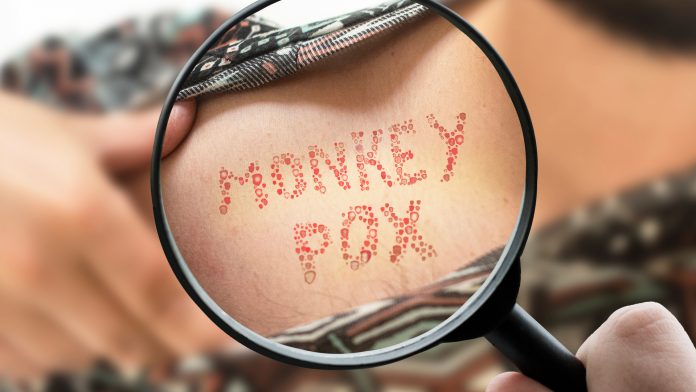
Researchers have discovered that patients’ symptoms of monkeypox in the current UK outbreak of the disease are different from those observed in previous outbreaks around the world.
The novel study is the first to analyse the symptoms of monkeypox in the UK outbreak and involved 54 patients who attended sexual health clinics in London and were diagnosed with monkeypox in May 2022.
The results illuminated that this cohort had different monkeypox symptoms than identified in previous disease outbreaks, finding a significantly higher prevalence of skin lesions in the genital and anal area and a lower incidence of tiredness and fever.
The team included researchers from Chelsea & Westminster Hospital NHS Foundation Trust, Imperial College Healthcare NHS Trust, Central London Community Healthcare NHS Trust, and Imperial College London.
They hypothesised that the high occurrence of genital skin lesions and co-occurring sexually transmitted infections in these monkeypox patients means there will likely be an increase in cases in the future and are calling for additional support and services to help control the condition.
Dr Nicolo Girometti, from the Chelsea & Westminster Hospital NHS Foundation Trust, said: “Currently, the UK and several other countries are seeing a rapid increase in monkeypox cases among individuals attending sexual health clinics, with no apparent links to countries where the disease is endemic. Monkeypox is a novel diagnosis within the sexual health setting, and our study, the first to publish on cases from this UK outbreak, will support future case finding and clinical care.”
Examining UK monkeypox patients
For their investigation, the team collected data from 54 monkeypox patients at four sexual health centres in London, confirming cases in the laboratory via an RT-PCR test. Data was compiled about the patient’s travel history, sexual history, and clinical symptoms of monkeypox, with the individuals being regularly advised on isolation protocols and assessed through telephone appointments.
Only two of the patients were unaware that they had been in contact with an infected person, and none had recently travelled to sub-Saharan Africa – a region where monkeypox is most commonly found – although some had visited other European countries.
The study participants had a median age of 41, and all identified as men who have sex with men, with 90% (47/52) reporting at least one new sexual partner in the three weeks prior to displaying symptoms of monkeypox. 49/52 reported inconsistent condom use during this period, and 29/52 had more than five sexual partners in the 12 weeks before their monkeypox diagnosis.
Differing monkeypox symptoms
All of the patients were symptomatic and displayed skin lesions, with 94% (49/52) having at least one lesion on the genital or perianal skin. The majority had mild illness and recovered at home, whereas five required hospital admission as a result of the lesions causing pain or becoming infected, and all were discharged after a median of seven days.
Dr Ruth Byrne, from the Chelsea & Westminster Hospital NHS Foundation Trust, commented: “The commonly observed symptom of skin lesions in the anal and penile areas, and the fact that a quarter of the patients tested positive for gonorrhoea or chlamydia at the same time as the monkeypox infection, suggests that transmission of the monkeypox virus in this cohort is occurring from close skin-to-skin, for example in the context of sexual activity.
“However, this finding may be biased by the fact that we are sexual health providers and hence may not reflect transmission in the wider population. It is possible that at various stages of the infection, monkeypox may mimic common STIs, such as herpes and syphilis, in its presentation. It’s important that sexual health clinicians and patients are aware of the symptoms of monkeypox as misdiagnosis of the infection may prevent the opportunity for appropriate intervention and prevention of onward transmission. Additional resources are urgently required to support services in managing this condition.”
The investigation revealed critical differences in the clinical symptoms of monkeypox in this group compared to other outbreaks, with a smaller portion feeling weak, tired, or having a fever. Moreover, 18% (10/54) of those studied did not report any early monkeypox symptoms before developing skin lesions.
Dr Girometti concluded: “Given the suggested route of infection via contact during sexual activity and the number of clinical findings differing from previous descriptions, we suggest that case definitions currently detailing symptoms such as acute illness with a fever should be reviewed to best adapt to the current findings, as at least one in six of this cohort would not have met the current ‘probable case’ definition.”
























